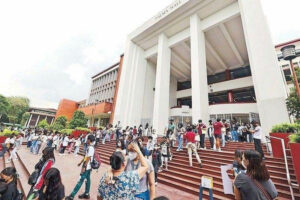THE Commission on Higher Education (CHED) wants an additional P13 billion for 2026 to ensure that education subsidies for low-income college students continue, its chairperson said on Monday.
About a million college students benefit from the Tertiary Education Subsidy and Tulong Dunong Program (TDP), but almost 300,000 could lose access to these grants if Congress does not approve the budget increase, CHED Chairperson Shirley C. Agrupis told congressmen at a budget hearing.
“We need an additional P13 billion to cover the short, and to cover the 4Ps (Pantawid Pamilyang Pilipino Program) list submitted by the Department of Social Welfare and Development (DSWD),” she said in Filipino, referring to the government’s flagship cash aid program.
The college subsidy program provides grants that cover the full or partial cost of college education for students enrolled in state universities and colleges. Eligible students get P20,000 yearly to help with schooling expenses. More than 700,000 students benefit from it, with recipients identified by the DSWD and the 4Ps program.
However, CHED’s proposed 2026 budget for the program was cut by 22.2% to P15.56 billion from the originally requested P20.01 billion, which could leave about 164,630 students without financial support, Ms. Agrupis said.
The Tulong Dunong Program is a targeted grant for students whose households earn no more than P400,000 annually. Eligible students get P7,500 per semester.
CHED’s requested budget for the program was cut by 28.1% to P5.1 billion, potentially affecting 135,792 beneficiaries, according to her presentation.
She also criticized the TDP framework as unsustainable, citing overlap with the Tertiary Education Subsidy and the role of lawmakers in managing beneficiary lists.
“I would like to forewarn that this TDP allocation coming from congressmen is not sustainable,” she said in Filipino. “It is creating chaos in the proper distribution of funds that are supposed to be allotted to 4Ps and Listahanan beneficiaries,” she added, referring to the Social Welfare department’s database of low-income households. — Kenneth Christiane L. Basilio

